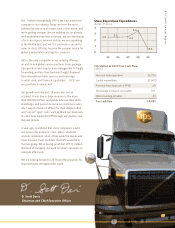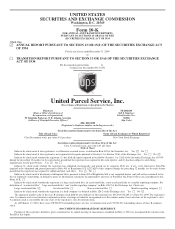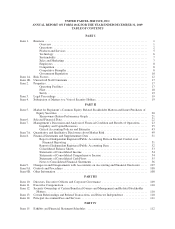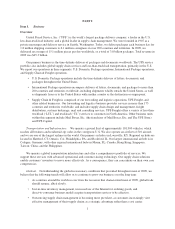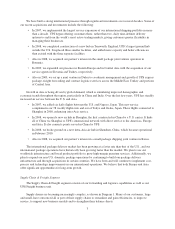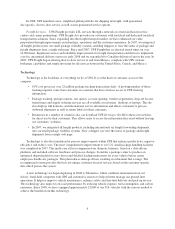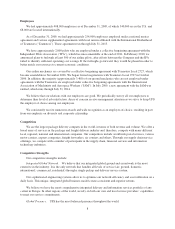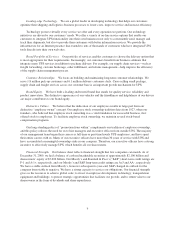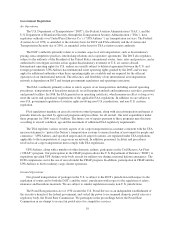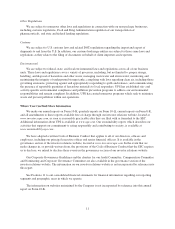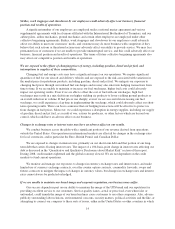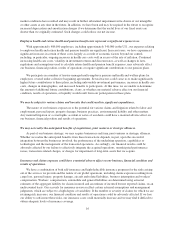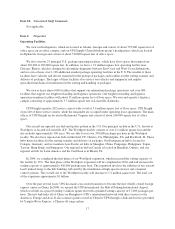UPS 2009 Annual Report Download - page 19
Download and view the complete annual report
Please find page 19 of the 2009 UPS annual report below. You can navigate through the pages in the report by either clicking on the pages listed below, or by using the keyword search tool below to find specific information within the annual report.Sustainability
UPS takes seriously its commitment to operate in a socially, environmentally and economically sustainable
manner. In 2003, the company was the first in its industry to publish a sustainability report that set forth its five-
year goals—and then to provide annual updates on progress toward attaining those goals. The website
www.sustainability.ups.com provides complete information on these efforts.
UPS constantly reviews our processes, programs and policies to ensure we are operating in a sustainable and
responsible manner that benefits all our stakeholders—customers, employees, shareowners and the communities
in which we operate. Multiple recognitions in 2009 attest to our success, such as:
• Included in the Dow Jones Sustainability Index for the seventh consecutive year and the FTSE4Good
Index for the fifth consecutive year
• Top 500 Greenest Companies in America (ranked No. 85) by Newsweek Magazine
• SmartWay Excellence Award by U.S. Environmental Protection Agency (EPA)
• Carbon Disclosure Leadership Index Top 50 Global Companies
• 40 Best Companies for Diversity by Black Enterprise Magazine
• Top 50 Companies for Diversity by Hispanic Business Magazine
• Best Places to Launch a Career by BusinessWeek Magazine
• 100 Best Global Brands by Interbrand (ranked No. 31)
• America’s Top Corporations for Women’s Business Enterprises (included every year since 1999)
Sales and Marketing
The UPS worldwide sales organization is responsible for the complete spectrum of UPS products and
services. This field sales organization consists primarily of locally based account executives assigned to our
individual operating units. For our largest multi-shipping site customers, we manage sales through an
organization of regionally based account managers, reporting directly to executive management.
Our sales force also includes specialized groups that work with our general sales organization to support the
sale of customer technology solutions, international package delivery, LTL and freight transportation, and
warehousing and distribution services.
In 2007, we completed a major sales force reorganization to better align our sales resources and integrate
with customer business processes. Our goal is to enhance the customer experience when dealing with the
extensive scope of UPS capabilities, at any point in the shipping or supply chain management process. In early
2010, we announced a streamlining of the U.S. Domestic Package operations. As part of the restructuring, we
will expand our outreach to customers by strengthening local sales and marketing efforts.
Our worldwide marketing organization also supports our global small package, supply chain and freight
businesses. Our corporate marketing function is engaged in market and customer research, brand management,
segment management, rate-making and revenue management policy, pricing, new product development, product
portfolio management, marketing alliances, and technology marketing, including the non-technical aspect of our
web presence. Advertising, public relations, and most formal marketing communications are generally centrally
developed and controlled.
In addition to our corporate marketing group, field-based marketing personnel are assigned to our individual
operating units and are primarily engaged in business planning, market analysis and opportunity identification,
segment management, and customer profitability management.
7


